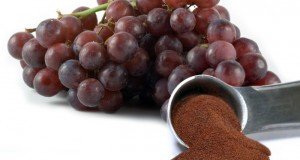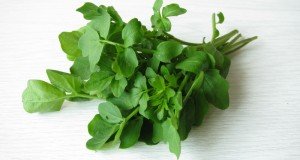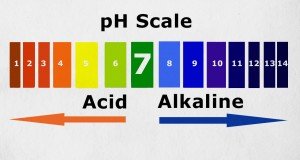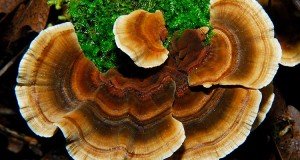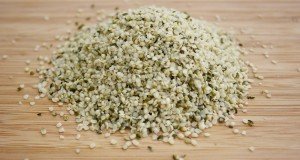Bartonella disease: A misunderstood vector-borne infection, similar to Lyme disease
(NaturalHealth365) According to the U.S. Centers for Disease Control and Prevention (CDC), 30,000 cases of Lyme disease are reported yearly. As only a small fraction of cases actually gets reported, the agency adds that the actual incidence of this disease in likely much higher. On top of that, emerging studies show that Bartonella disease, a vector-borne infection – often described as a ‘Lyme disease co-infection (but not entirely accurate) – can often be overlooked by most uninformed doctors.
Bartonella disease is a lifedraining infection – often undetected even by integrative physicians. On the next NaturalHealth365 Talk Hour, Jonathan Landsman and chronic disease expert Dr. Tania Dempsey discuss Bartonella disease – and reveal the latest, cutting-edge natural protocols for this mysterious and often-misdiagnosed condition. If you are concerned about the risk of Lyme disease or other associated illnesses, you won’t want to miss this life-changing show.
Sign up now for access to our free weekly show, newsletter plus much more!
Experts say: Bartonella disease is like the “new Lyme disease”
As previously mentioned, Bartonella is a vector-borne infectious disease, capable of being spread by a variety of insects – including flies, fleas, mosquitos and lice – as well as wildlife and household pets. In addition to being (wrongly) associated with Lyme disease, Bartonella is a significant illness on its own. In other words, it’s possible to NOT have Lyme disease, but still to be infected with Bartonella.
Bartonella causes symptoms of fever, headache, rashes and joint pain – along with gastrointestinal problems. Dr. Dempsey, our next guest on the NaturalHealth365 Talk Hour, reports that it can also cause “Mast Cell Activation Syndrome,” an over-reaction of the mast cells that contribute to the body’s natural defenses.
Mast cells often react to the presence of Lyme or Bartonella disease by releasing showers of a pro-inflammatory chemical known as histamine – the body chemical that causes watery eyes, runny nose, inflammation and other symptoms of allergies.
Blocking the effects of mast cells can help to control symptoms, but Dr. Dempsey notes that it is vital to discover what is triggering them in the first place.
It should be noted: Dr. Dempsey – an expert on the subject of Bartonella – says that this disease can cause Hashimoto’s disease (a thyroid disorder), other autoimmune problems, and even neuropsychiatric disorders such as anxiety, depression and obsessive-compulsive disorders. In fact, Dr. Dempsey points out that Bartonella could be behind the widespread incidence of anxiety and depression in the United States – as well as the reason that some patients don’t respond to conventional psychiatric medicines.
To learn more about this often misunderstood and more common than you think infection – don’t miss the next NaturalHealth365 Talk Hour with Jonathan Landsman and Dr. Dempsey.
Sign up now for access to our free weekly show, newsletter plus much more!
Natural solutions do exist for systemic infections like, Lyme and Bartonella
Treatment for Lyme disease may include both antibiotics and/or specific herbal medicines. Treatment usually revolves around naturally boosting the immune system, lowering inflammation and managing the root causes of the symptoms.
Anti-inflammatory, immune-boosting foods include fresh fruits and vegetables, nuts, seeds, coconut, wild-caught fish, organic meats and raw cultured dairy may or may not be suggested depending on individual situations.
Other beneficial foods include berries – which are high in natural antioxidants such as anthocyanins – and bone broth, which boost digestive health with their natural stores of the amino acids proline and glycine. Probiotic-rich foods, such as yogurt, sauerkraut and kimchi, can help slow the progression of infectious disease and reduce symptoms.
Vitamins and minerals can also help alleviate Lyme disease and Bartonella. Vitamin D boosts immunity and is anti-inflammatory, while B-complex vitamins support neurological health and combat infections. Magnesium is an effective natural way to reduce joint pain.
Mushrooms such as reishi and maitake can help boost immune system function and reduce autoimmune reactions.
Finally, CoQ10, an enzyme, protects the brain and lowers inflammation and reduces musculoskeletal pain.
This week’s guest: Tania Dempsey, MD, an expert on vector-borne infections and chronic disease
Discover a safe and effective way to eliminate the threat of vector-borne infections – Sun. Sept. 24
Dr. Tania Dempsey, an internationally recognized expert in chronic disease, autoimmune disorders and mast cell activation syndrome, uses integrative medicine to get to the root cause of illness. After receiving her Bachelors of Science degree from Cornell University and her MD from the Johns Hopkins University School of Medicine, Dr. Dempsey completed her residency at NYU Medical Center/Bellevue Hospital, and was attending physician at a large multi-specialty medical practice in White Plains, New York.
The founder and director of Armonk Integrative Medicine., Dr. Dempsey focuses on targeted, individually customized treatment for chronic and autoimmune diseases.
Sources for this article include:
 About the author: Jonathan Landsman is the host of NaturalHealth365.com, the NaturalHealth365 Talk Hour – a free, weekly health show – and the NaturalHealth365 INNER CIRCLE, a monthly subscription to the brightest minds in natural health and healing.
About the author: Jonathan Landsman is the host of NaturalHealth365.com, the NaturalHealth365 Talk Hour – a free, weekly health show – and the NaturalHealth365 INNER CIRCLE, a monthly subscription to the brightest minds in natural health and healing.
Reaching hundreds of thousands of people, worldwide, as a personal health consultant, writer and radio talk show host, Jonathan has been educating the public on the health benefits of an organic, non-GMO diet along with high-quality supplementation and healthy lifestyle habits, including exercise and meditation.



